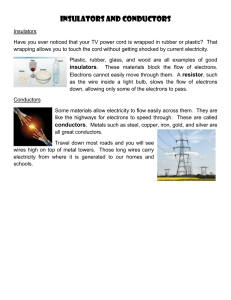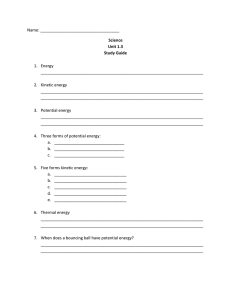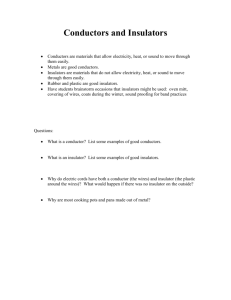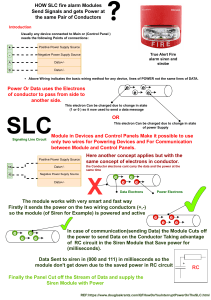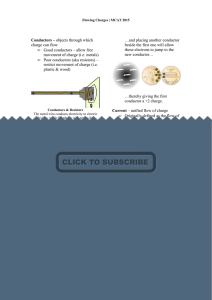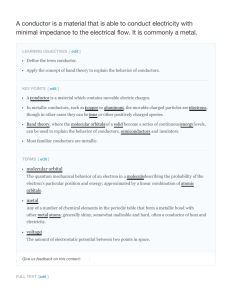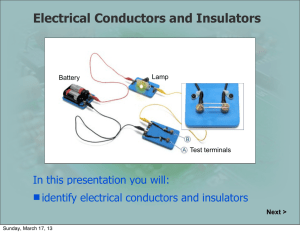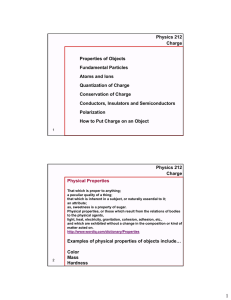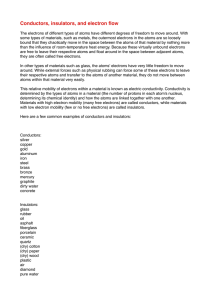Voltage The force motivating electrons to "flow" in a circuit It is
advertisement
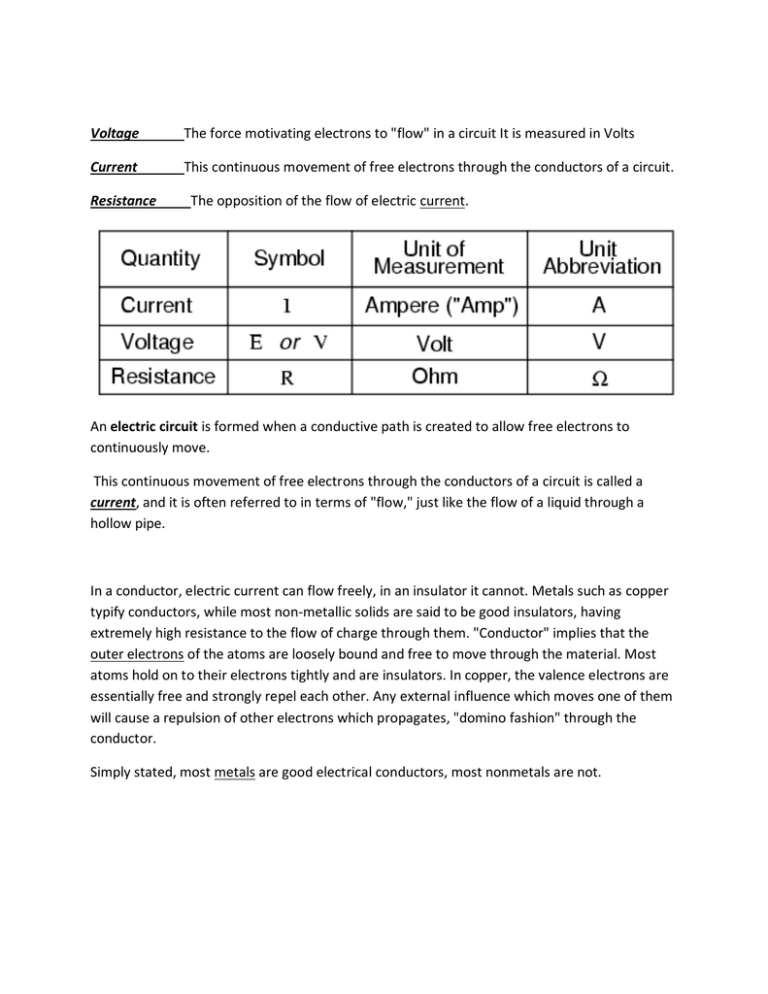
Voltage The force motivating electrons to "flow" in a circuit It is measured in Volts Current This continuous movement of free electrons through the conductors of a circuit. Resistance The opposition of the flow of electric current. An electric circuit is formed when a conductive path is created to allow free electrons to continuously move. This continuous movement of free electrons through the conductors of a circuit is called a current, and it is often referred to in terms of "flow," just like the flow of a liquid through a hollow pipe. In a conductor, electric current can flow freely, in an insulator it cannot. Metals such as copper typify conductors, while most non-metallic solids are said to be good insulators, having extremely high resistance to the flow of charge through them. "Conductor" implies that the outer electrons of the atoms are loosely bound and free to move through the material. Most atoms hold on to their electrons tightly and are insulators. In copper, the valence electrons are essentially free and strongly repel each other. Any external influence which moves one of them will cause a repulsion of other electrons which propagates, "domino fashion" through the conductor. Simply stated, most metals are good electrical conductors, most nonmetals are not.
